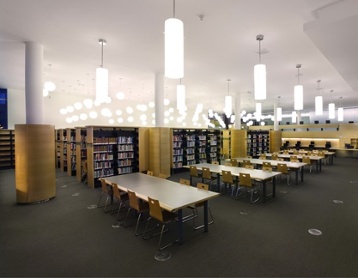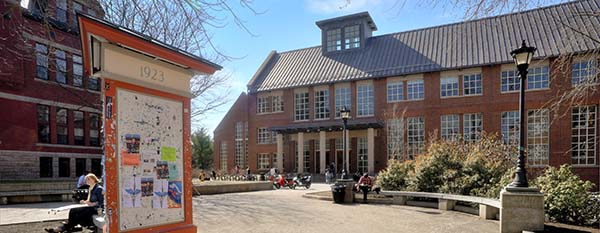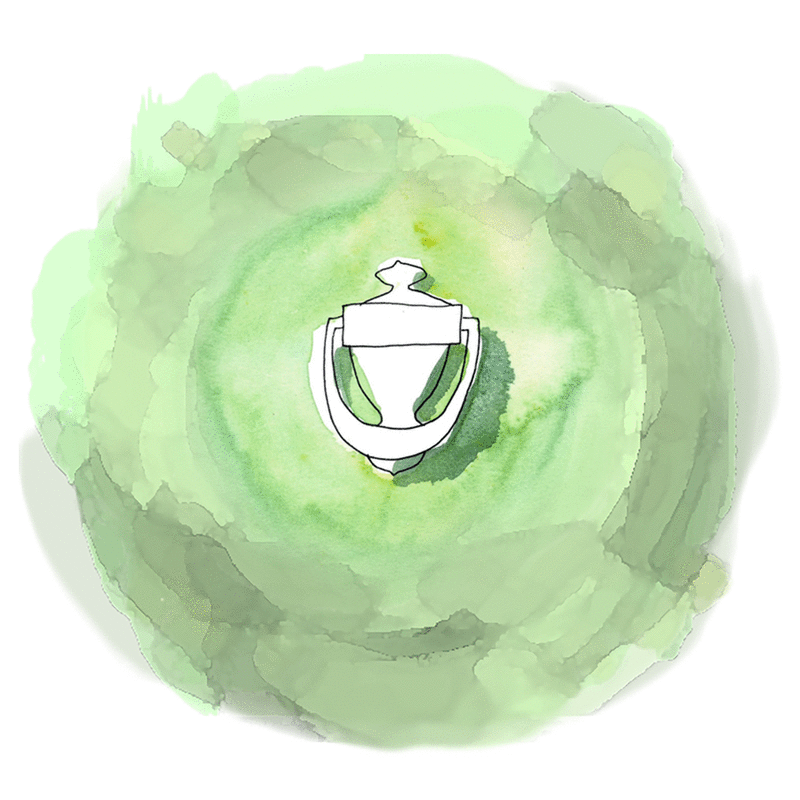
2016 problems. University libraries have an unusual task in introducing library literacy to incoming freshmen, some of whom have only ever done digital research. Tasked with introducing new millennials to the world of taking out books, doing research and finding paper-based content, libraries are trying all sorts of new solutions, like games!
I spoke to Kathrine Dixon from the University of New Hampshire and Caleb Domsey and Aliya Dalfen from Humber College and asked if they’d share their FYE Library Edventure game-building experiences with us.
We’d intended to include Amanda Roth from California State University (who wrote this great article about the UCSD Library FYE program) as well as Nicole Pagowsky and Leslie Sult from the University of Arizona Library but apparently Kellian doesn’t know how to run a conference call. Sorry guys. Either way it was fun to chat with Kathrine, Aliya and Caleb and here’s a summary of what they said.
Q: What are the challenges for First Year Experience Library Instruction?

Aliya said that the first challenge for FYE experience at Humber is just to be welcoming and get students familiar with the library: What are the hours? Can you bring coffee? What services does the library offer?
“Humber is a community college with a really strong hospitality program.” She said, “A lot of our community is international and without an engaging First Year Experience program, some students might never think to visit here.” The question is, when the goal is to highlight the positive, welcoming environment, how does one get students in the library without making it yet another mandatory classroom stand-and deliver experience?
As the beautiful centerpiece of the UNH campus, the Diamond Library is hard to miss but Kathrine said the challenge of their First Year Experience was more about basic library literacy skills: how can you use different types of electronic resources? What is JSTOR? How do you develop professional research habits? Everyone agreed that a lot of freshmen come in well-versed in online searches but may have never used an academic or research library.

Both schools agreed that it’s important to involve professors. Professors already have their plates full with their own curriculum so the next challenge is how do you package this to a professor so that you can justify taking their class time? Professors need feedback that they can integrate into their own grading system: responses or photos.
Q: Why games?
Motivation was a big factor for both schools. Freshman have a lot of content in their First Year Experience and it’s easy to lose their attention during the library instruction, especially if your program is “stand-and-deliver”. Games are a more engaging and collaborative way to get through the content. Story can make the content more interesting and easier to remember.
Many libraries have experimented with games like library jeopardy or a scavenger hunt but when you have hundreds of students playing, it’s hard to collect responses. Caleb said, “We wanted to avoid the regular scavenger hunt scenario.” It’s hard to know if the students completed the game, how they responded to certain questions and where they got lost. Technology can help a lot with crowd control and assessment. You can route students in different directions so you don’t get 100 students standing in the same lobby looking for the answer to a challenge. You can collect images and export everything to an Excel Spreadsheet, which teachers can then plug into their Content Management System.
The ACRL Bibliography for First Year experiences has no fewer than 12 articles about how to assess First Year Experience, so assessment is definitely something people consider and games are an excellent way to assess.
Q: What were the advantages and challenges to using the Edventure Builder?

Caleb and Aliya agreed that the game made their library instruction much more collaborative for the students. “It was a great ice breaker. Some groups of students even stay after class trying to finish.”
The Edventure Builder is easy to use and has a lot of flexibility in the types of story you can tell- but librarians agree it can be some work to come up with a story. Most libraries start with a more linear game while they get used to it, and then get more daring and creative as they feel more comfortable. Caleb admits that Humber’s first game was “pretty linear” but he has plans of building out their next game to include more choose-your-own adventure pathway branching.
The UNH FYRE game was largely built by a student volunteer and so was creative and unusual right out of the gate. This escape room adventure asked students to explore JSTOR articles in order to get out of a locked (digital) “room” but this created a different challenge. “We had over 100 kids play but we had a lot of cheating!!” Says Kathrine. Everyone agreed that a lot of things need to be taken into consideration: what to do when a phone breaks, how to get students into groups, how to give them strategies for the game. Like anything, it takes some time to learn the best practices, but it’s a fun skillset to have.

As far as the advantages, everyone agreed that the students seem to really respond to it. They enjoy it, they collaborate and they learn the content. “We integrated an evaluation,” Caleb explained, “and about 95% of the students who played said that they found it helpful or very helpful.”
The evaluation above was from Amanda Roth’s presentation at LOEX last year. Students at the University of California, San Diego reported huge changes in their understanding and comfort with the library after playing UCSD’s library game.
What recommendations would you give to other Instructional Librarians experimenting with games?
The big take away was that it always comes back to learning objectives so none of your content is arbitrary. In games, every bit of content counts do make sure you don’t have random information. That’s just good advice for teaching anyways but as a game designer, it made my heart SING to hear them say that.
Aliya and Caleb admitted that the kids “weren’t as good on their phones as we had expected” and didn’t know how to do things like open multiple windows. It’s good to know how the game works on a mobile device so you can help the kids troubleshoot. They also said that 50% of the students at Humber didn’t want to have their pictures taken or used. “There’s definitely a privacy line.” said Aliya, “so make sure you give students an opt-out for photos.” For the photos and answers that they took, the Humber library team collects the responses and puts together a quick slide show for the kids to watch together while they go through the game answers.
Another recommendation was to pare back for your first game so you start with something simple that works, and you can expand from there. That also made my heart sing since one of my favorite rules of thumb is “What’s the best game? The one that you built and finished and works smoothly.”
You can hear Kathrine and I talk about the UNH FYRE program at the Diamond Library this year at the 2016 LOEX Annual Conference in May. Here’s our session info! Have you had any experiences with FYE library program technology? I suspect that Twine, Socrative or Tale Blazer might also be great platforms for creating these types of programs. Let us know what you think, or if you have any other suggestions for librarians building FYE programs!

Leave a Reply